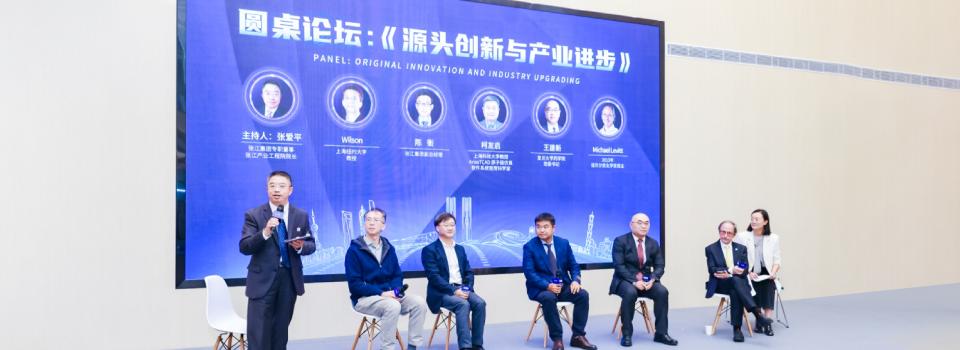Nov 04 2022
Published by
yl10038

On Oct 28th, NYU Shanghai Professor of Practice in Computer Science Yik-Cheung (Wilson) Tam spoke at a panel session as part of the inauguration ceremony for the Zhangjiang Industry Innovation Alliance. The alliance, initiated by the Shanghai Zhangjiang Group together with 73 universities and institutes, investment institutions, industrial corporations and technology service organizations, brings international research together with industry and aims to boost the Zhangjiang Hi-Tech Park’s innovative power. Along with Professor Tam, NYU Shanghai Associate Vice Chancellor Ding Shuzhe was in attendance.
The discussion, “Original Innovation and Industry Upgrading,” brought together panelists from industry and academia. Professor Tam was invited to share his insights as a scientist working on natural language processing, a field that enables computer algorithms to understand human language. Prior to NYU Shanghai, Tam had worked for Microsoft and WeChat AI on NLP projects, including a WeChat-based virtual personal assistant program Xiaowei and Microsoft’s personal assistant Cortana.
The panel opened with a discussion of how academia and industry cooperate best. Professor Tam spoke on NYU Shanghai’s academic advantages in facilitating research, including the campus’ 1:8 professor-to-student ratio. “Our students who are interested in research are granted more opportunities to find a faculty member for mentorship and work on research projects,” he said.
The panel also discussed a recent artificial intelligence research development by DeepMind, Google's AIe team, in which an AI-driven protein folding model can use algorithms to quickly predict protein structure. Tam contributed his thoughts, pinpointing that there is a commonality of representing a protein and a sentence as a sequence of symbols (alphabets). “From the perspective of artificial intelligence, finding the structure of a protein or the structure of a sentence can be formulated as a machine learning problem where the ground-truth target structure of a sequence is given and machines simply learn the mapping from an unstructured input into a structured output using deep neural networks,” he said.
As one of the strategic layout of the Zhangjiang Group to “build innovation community and enhance ecological competitiveness,” the establishment of Zhangjiang Industry Innovation Alliance will promote the innovation level of Zhangjiang, deep integration of industry, academia and research, and build a communication and interaction platform for linking original innovation resources. It is the hope that more scientific researchers will bring their projects to Zhangjiang and achieve fruitful results.


